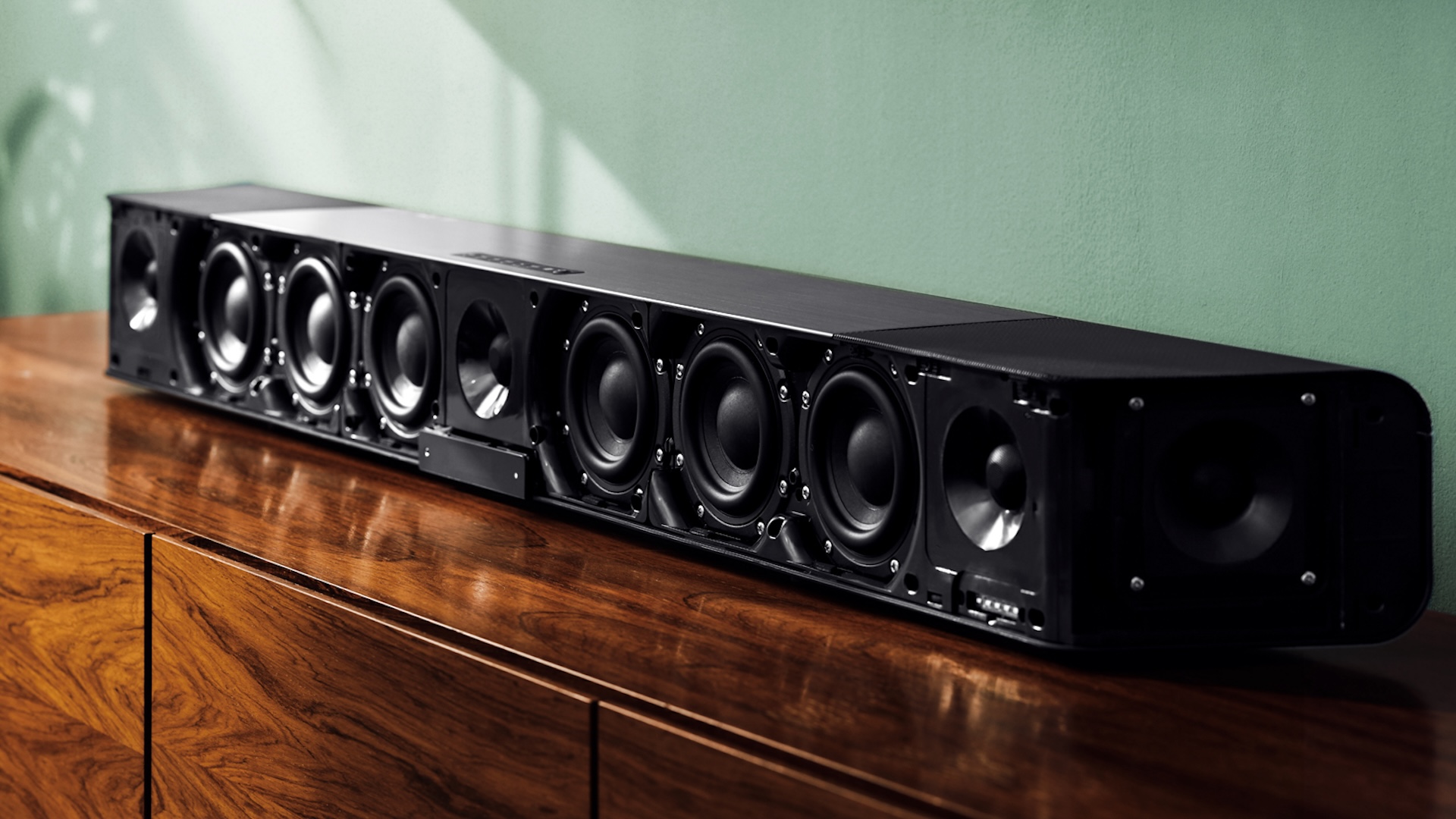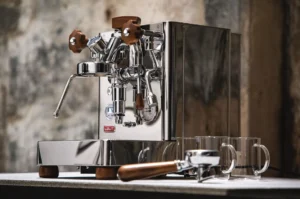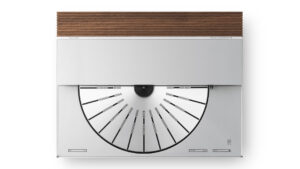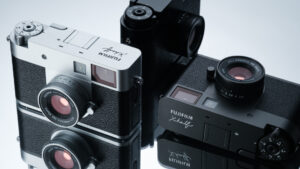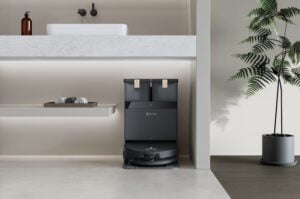Looking to spruce up your home cinema? A dedicated movie room is no longer the domain of the uber-wealthy; home cinemas are becoming increasingly common for the everyday person. If you want to upgrade your home theatre, you’ll want to start with a soundbar.
Despite TV manufacturers getting niftier with their native audio, no amount of onboard TV speakers can match a soundbar and its unique way of bouncing soundwaves around a room. As long as you’re making the right choice, that long speaker lounging horizontally beneath (or above) your TV is going to take your living room and flip it into a genuine entertainment powerhouse.
If you’re looking to recreate the cinematic experience at home, here are our picks for the best soundbars that are currently available.
Jump To:
The Best Soundbars In Australia
Sennheiser Ambeo MAX Soundbar
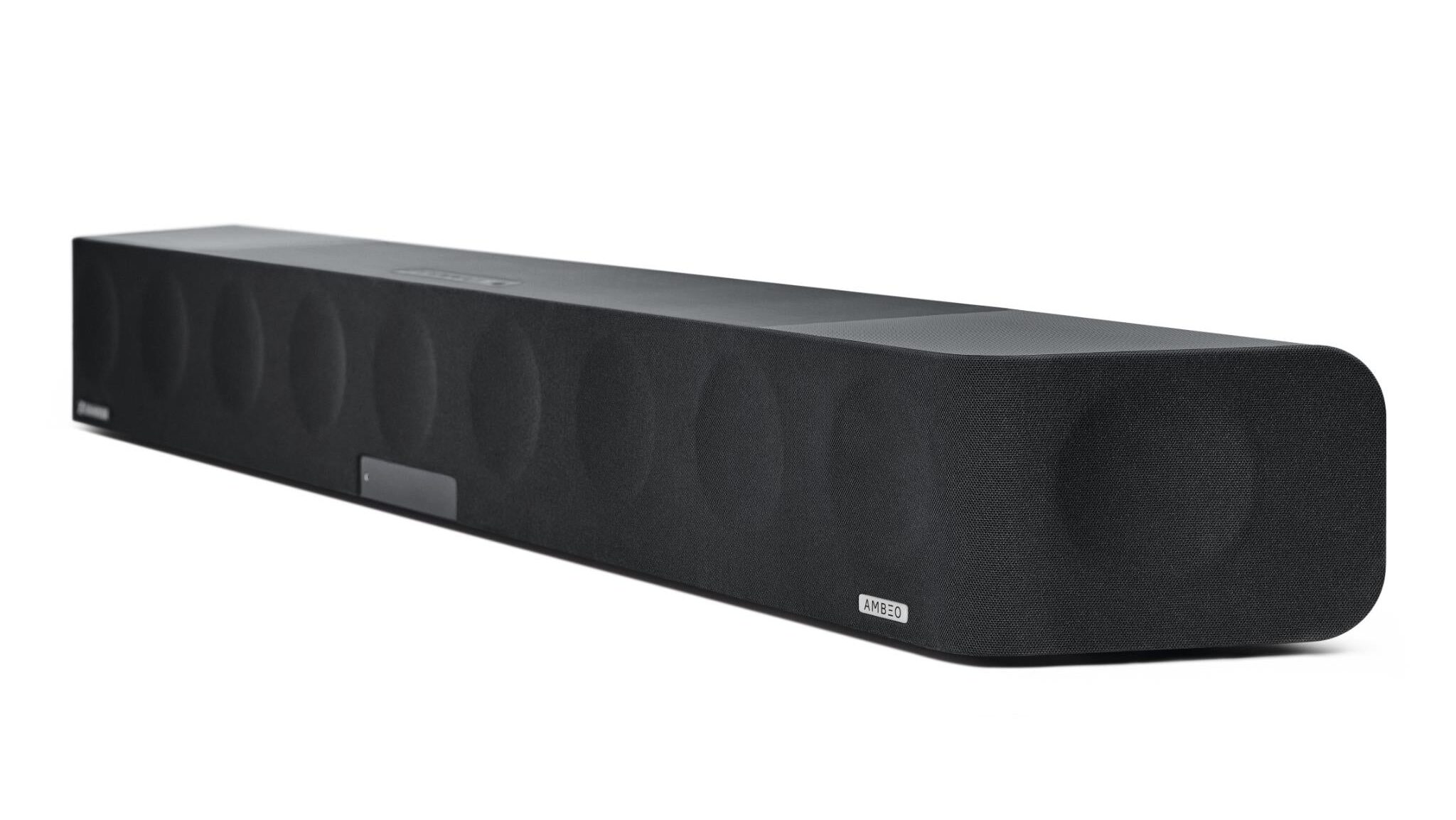
Audio Formats: Dolby Atmos, DTS:X
Height: 140 mm
Width: 1270 mm
Weight: 18.5 kg
The Sennheiser Ambeo MAX Soundbar was the German company’s first consumer speaker, and it’s clear they wanted to move beyond just headphones to offer one of the absolute best on the market. Consider this a success, with the feature-rich Ambeo MAX Soundbar including all the gold-standard audio technologies alongside a sound that’s big, crisp, and clear enough that you won’t really need anything else.
There are very few reasons to avoid this beast, although the bulky size may throw some off. At 127 cm wide and 14 cm tall, it’s best used with a wall-mounted TV.
The reasons to buy are numerous. Support for Dolby Atmos and DTS:X; a proprietary Ambeo “Virtual 3D” sound system feature, which stretches sound around the room and doubles down spatial, object-based audio; solid Wi-Fi connectivity which helps the Ambeo MAX double as a highly capable premium smart speaker. The sound quality is exceptional, even without any additional speakers.
You’ll notice the “1” in the 5.1.4 channel setup. This doesn’t mean a separate subwoofer as it usually would. The Ambeo MAX has more than enough drivers to handle just about every layer of the audio experience, so it’s incredibly adept with those nuanced low-frequencies, building a sound profile that’s rich and balanced at every volume.
Since its launch, the MAX has also received a new operating system – Ambeo|OS – which opens the speaker up to Apple AirPlay 2, Spotify Connect, and TIDAL Connect streaming support.
JBL Bar 1000
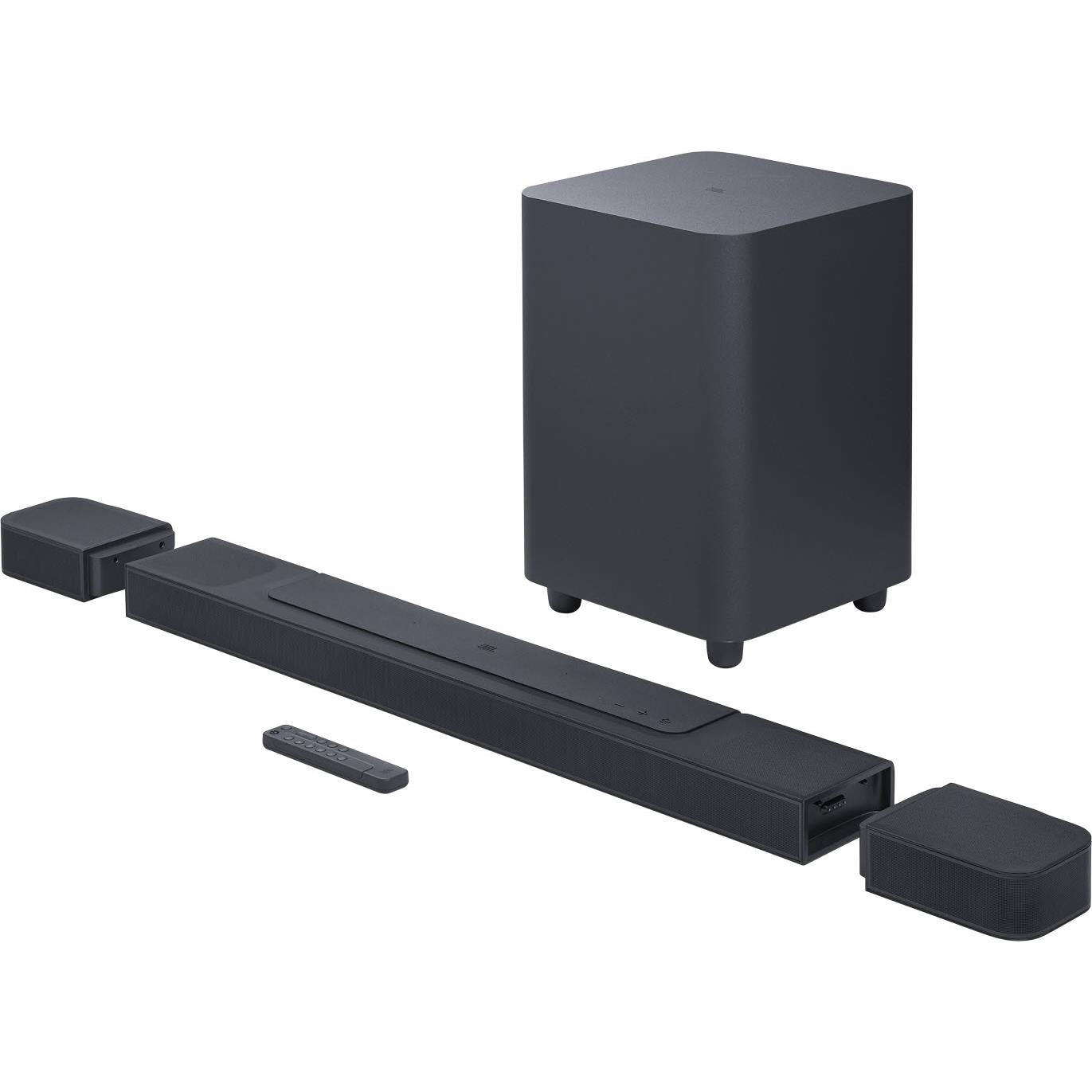
Audio Formats: Dolby Atmos, DTS:X
Height: 125 mm
Width: 884 mm
Weight: 3.7 kg
JBL’s Bar 1000 launched as part of the company’s 2023 Dolby Atmos lineup, positioned as the second most expensive in the series. You’ve got a large subwoofer and two rear channels included with the 3.7 kg soundbar, notable because those two rear speakers are completely wireless.
A major part of the appeal of the JBL Bar 1000 is that the rear channels can attach magnetically to each end of the soundbar to simply recharge. This increases convenience and keeps the design of your home cinema very clean.
The 12-channel soundbar gets most of its power from those four up-firing drivers which help build a true Dolby Atmos spatial audio experience. The results are fantastic, even more so with the PureVoice Dialogue Enhancement Technology that JBL has managed to refine, bringing dialogue forward in the mix so you won’t even think about subtitles.
Check out our full JBL Bar 1000 review here.
Sonos Arc
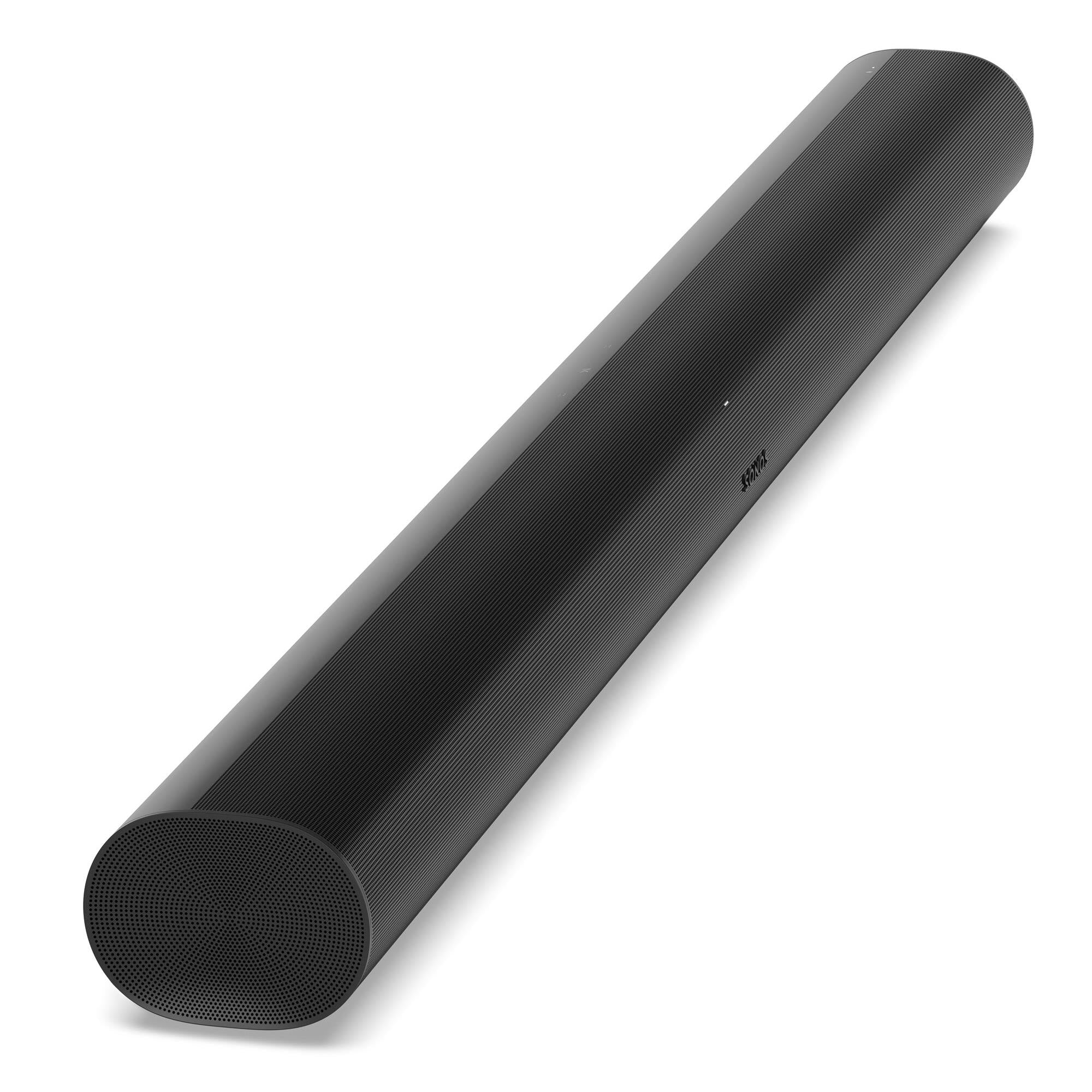
Audio Formats: Dolby Atmos
Height: 87 mm
Width: 1142 mm
Weight: 6.25 kg
The Sonos Arc is easily one of the best balanced on the market if you’re after a premium Dolby Atmos soundbar that also focuses on beautiful design, smart calibration and gold-standard connectivity.
While the price of the Sonos Arc means the impressive Sonos Beam is now more affordable, it’s still worth cracking out some extra stacks for the brand’s top-tier offering. Even without Sonos’ notoriously expensive external speakers, the bar itself does an excellent job at recreating convincing surround sound using Dolby Atmos content.
Extra value comes from the sleek monochromatic, design-friendly body that’ll look slick in any modern home. It’s painfully easy to set up and calibrate using Sonos’ TruePlay as well, adjusting to the room and tweaking its detailed, weighty audio profile based on the setting.
Connections include an HDMI ARC port, the option for optical digital audio to HDMI converter, Bluetooth, Wi-Fi, and Apple AirPlay 2. That’s more than enough to help justify the price point, even if the Arc is nowhere near as feature-rich as the Samsung and Sennheiser options on this list of the best soundbars money can buy.
Bose Smart Ultra Soundbar
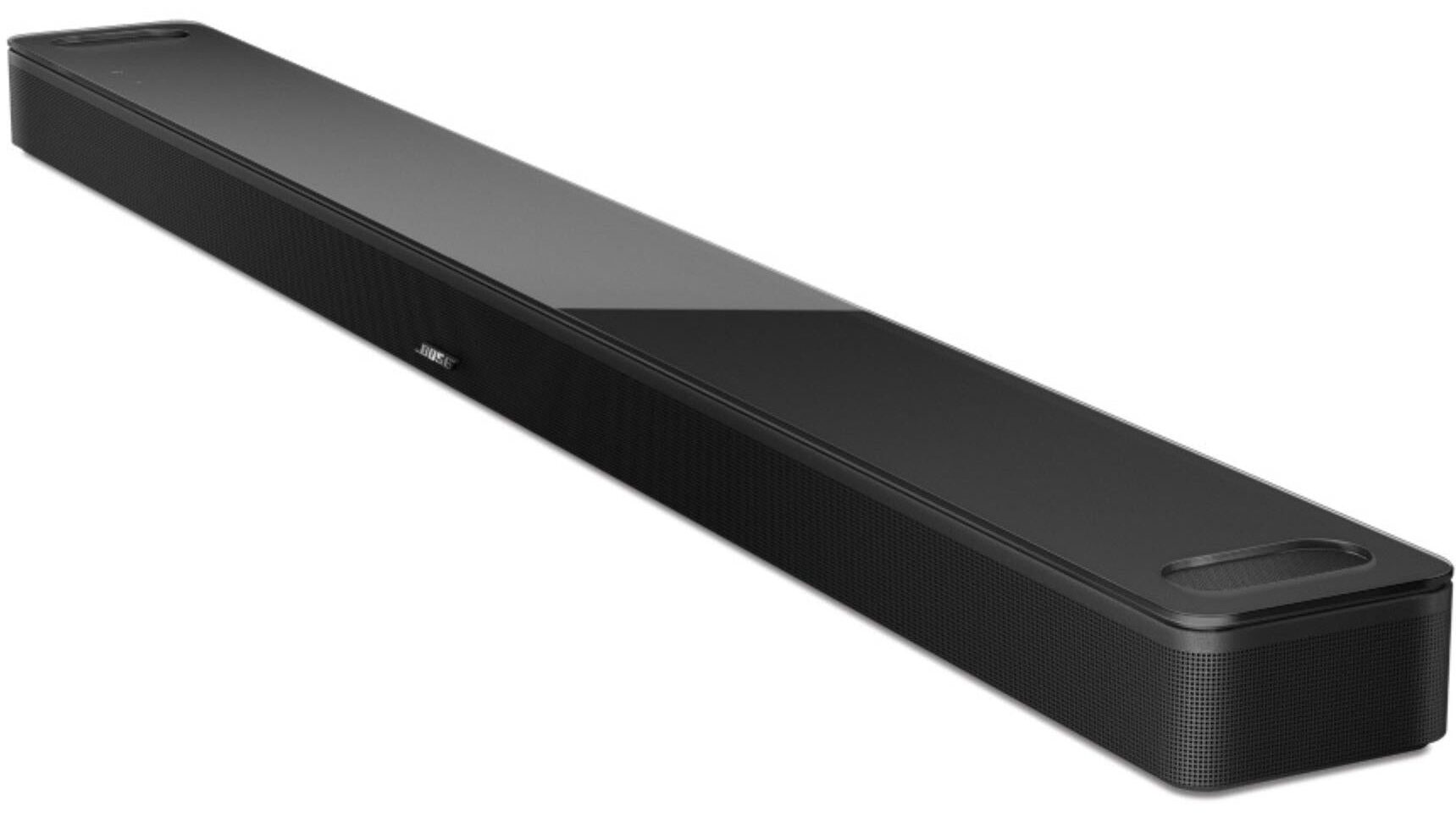
Audio Formats: Dolby Atmos
Height: 58 mm
Width: 1045 mm
Weight: 5.8 kg
In terms of hardware, the Smart Ultra comes packaged with nine speakers – including two upwards-firing drivers – that provide rich audio. If you’re interested in an all-in-one home theatre option, the Bose Smart Ultra is a pretty solid choice that still manages to offer very detailed surround sound.
When it comes to connecting to the Bose Smart Ultra, you are spoilt for choice. There’s Wi-Fi and Bluetooth support, along with streaming via Apple AirPlay 2, Chromecast and Spotify Connect. If you’d rather go wired, there are HDMI eARC and optical audio ports in the back.
If you have a smart device ecosystem at home, the soundbar has Amazon Alexa built-in and also supports Google Assistant, so you have the option to control it via voice commands. If Bose is your brand when it comes to headphones, the Ultra also offers SimpleSync which will let all of your devices connect – handy if you want to swap from the soundbar’s audio to your earbuds (provided it’s the right model).
As its name suggests, Bose has also bundled a few smart features into this soundbar. If you struggle to hear dialogue, you can activate Dialogue Mode to bring those voices to the front of the mix. It also offers ADAPTiQ Calibration, which helps optimise the soundbar’s performance based on the room it’s in. Depending on what you’re looking for in a soundbar, these could be the features that help get it over the line for you.
Samsung HW-Q990D
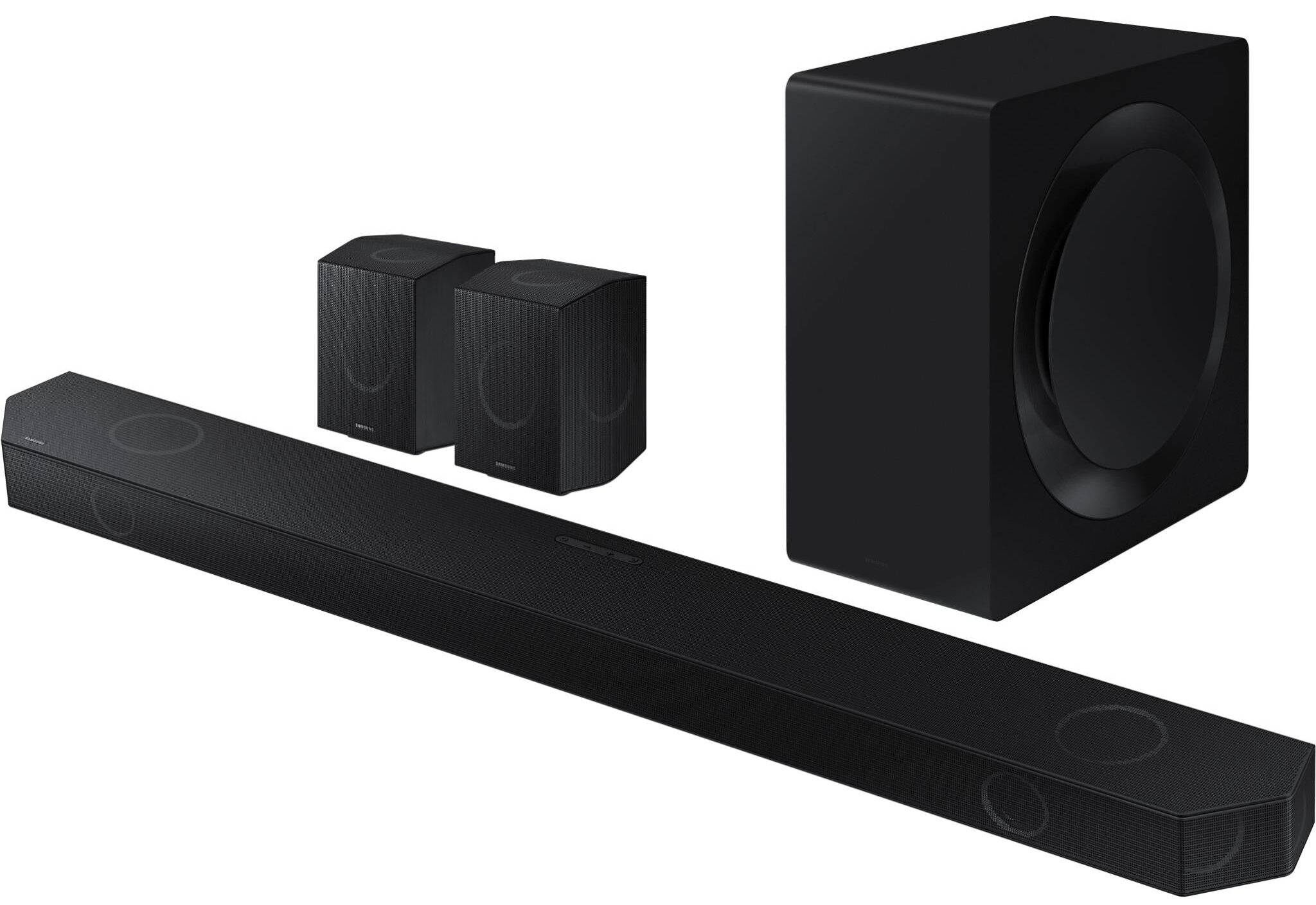
Audio Formats: Dolby Atmos, DTS:X
Height: 69.5 mm
Width: 1232 mm
Weight: 7.7 kg
The Samsung HW-Q990D is an impressive achievement from the Korean company, specced out with a clear goal to push soundbar technology forward more than just a few steps.
With support for true Dolby Atmos and DTS:X, the soundbar comes bundled with a wireless subwoofer and two rear channels to help build a truly surround sound performance that utilises the entire room.
Several smart features make this the ideal soundbar, especially for those who are using it with a Samsung TV. For starters, it supports Samsung’s Q-symphony calibration technology, which uses the TV’s speakers and their built-in microphones to tune the sound and automatically dial in the ideal settings based on the environment.
The Samsung HW-Q990D also uses a feature called SpaceFit Sound Pro to fine-tune the wireless subwoofer and better align it into the ecosystem, making it much more than just a high-end Dolby Atmos soundbar.
A third calibration technology is Samsung’s Active Voice Amplifier, which when active constantly listens out for ambient noise (eg. a phone ringing, a baby crying or a vacuum cleaner) and adjusts the sound profile accordingly.
Connectivity includes various HDMI inputs, in addition to support for Apple AirPlay and Amazon Alexa, as well as Bluetooth and Wi-Fi. Its HDMI 2.1 port also allows for 4K at 120Hz pass-through, making it a great companion for your gaming setup.
Sony HT-S2000 Soundbar
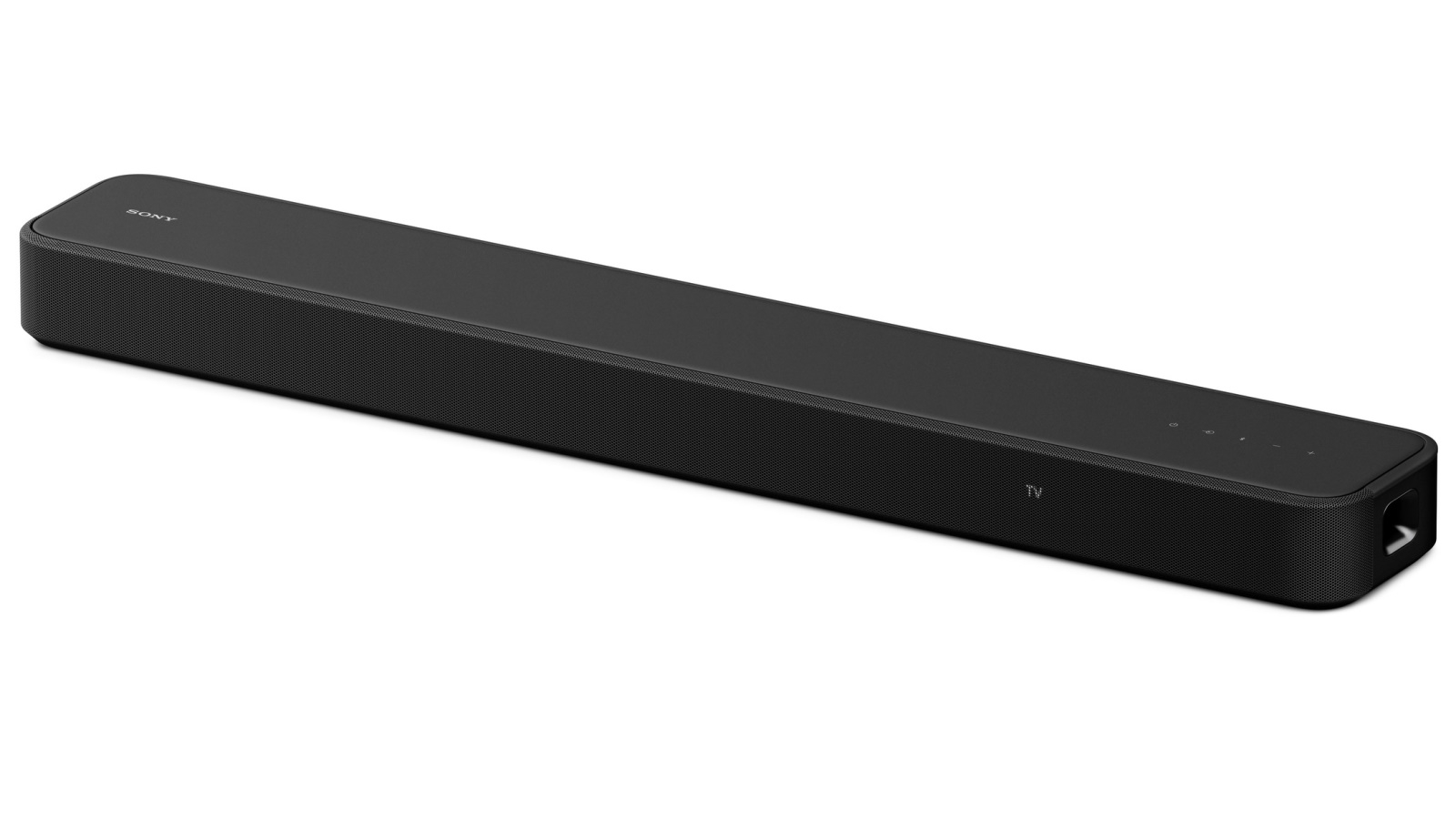
Audio Formats: Dolby Atmos, DTS:X
Height: 135 mm
Width: 895 mm
Weight: 6 kg
Clocking in at a nice mid-range price point is the Sony HT-S2000 Soundbar, a 3.1-channel device that still manages to punch well above its weight. Sony has always been incredibly reliable when it comes to software, and it looks like their habit of pushing out better sound than expected is recreated with this iteration of the Sony HT series.
This is achieved through Sony’s signature Vertical Surround Engine, which works with Dolby Atmos and DTS:X content to recreate at least some sense of a wider, more immersive soundstage. The height and width of the sound are stretched around the room to create the illusion of surround sound, without the need for any additional speakers.
What’s the compromise then? Well, considering Sony has thrown a lot into the sound, there’s an egregious lack of connectivity options and no smarts to speak of. You’ve got Bluetooth and HDMI ARC/eARC next to an optical audio port, but there’s no support for AirPlay 2, Chromecast, Amazon Alexa, or Google Assistant.
Does sound make up for that? It sure does. But you’ll have to decide what level of compromise you’re comfortable with before adding the Sony HT-S2000 to your home cinema set-up.
Sonos Ray
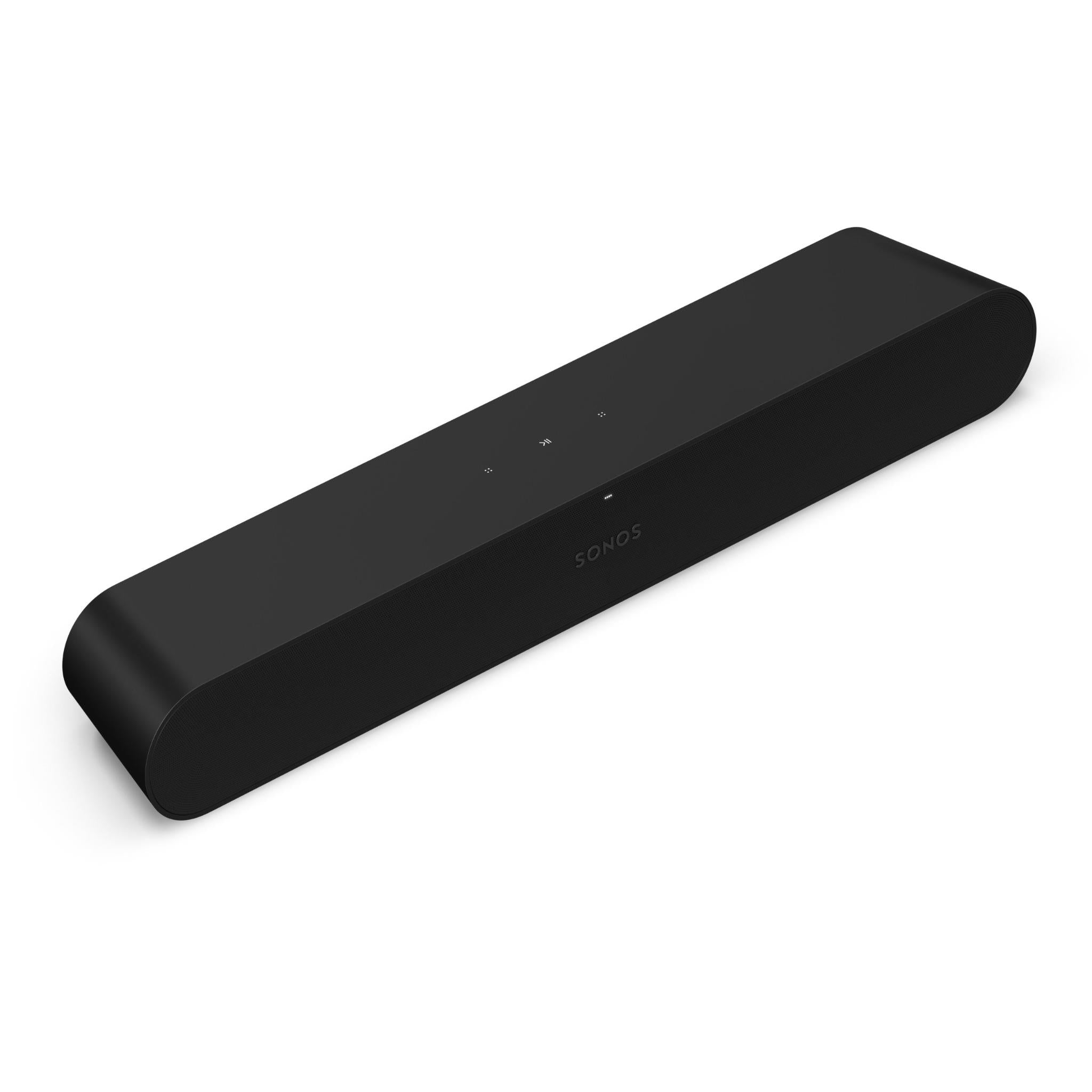
Audio Formats: Dolby Digital, DTS Audio
Height: 71 mm
Width: 559 mm
Weight: 1.95 kg
After the Sonos Beam and the Sonos Arc, the renowned hi-fi brand has started playing at the lower (well, low-ish) end of the price scale with the Sonos Ray.
You’ve only got an optical digital audio input connection here (while many soundbars now have two HDMI inputs, this has none). You’re not going to get to experience the Dolby Atmos support, deep bass response and notably wide sound stage of the Sonos Arc either.
However, we’ve found that the Ray holds its own quite well, with support for standard 5.1-channel Dolby Digital and DTS audio, handled quite well by the smaller profile meant for 55-inch TV sound and below.
You might want to buy some dedicated surround sound speakers (and a dedicated subwoofer) to make this shine, but the immersive Dolby Atmos interpretation does fine on its own if you’ve got a smaller space. Besides, virtual Dolby Atmos playback can be just as good if you aren’t overly concerned with the smaller details.
LG S95TR
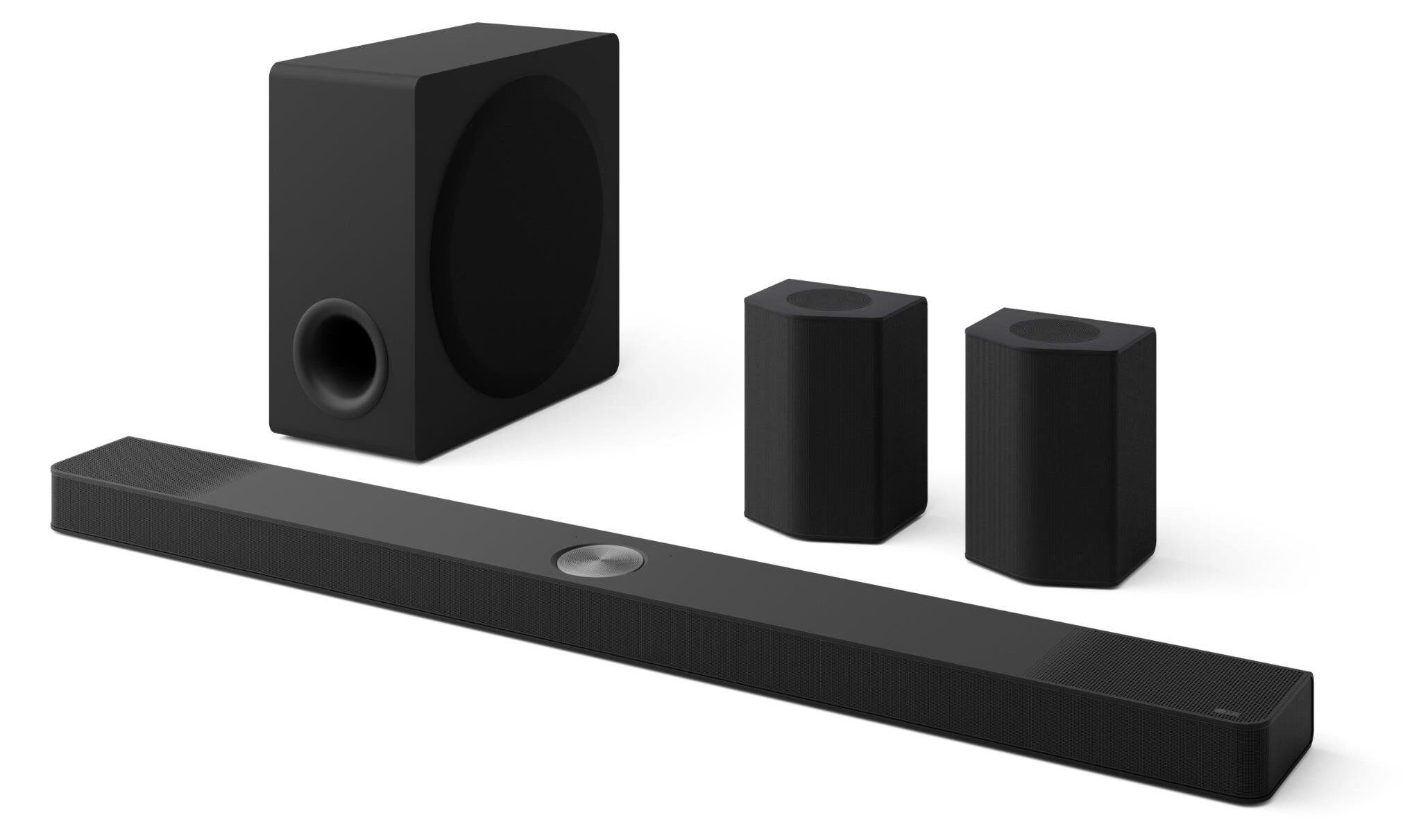
Audio Formats: Dolby Atmos, DTS:X
Height: 63 mm
Width: 1250 mm
Weight: 5.65 kg
If you’ve got the space for a full surround sound experience, the LG S95TR will let you immerse yourself in your favourite movies and music. The 9.1.5 channel package includes a soundbar along with a set of rear speakers and a subwoofer, which combine nicely for a well-balanced spatial audio experience. The S95TR also includes an AI room calibration feature, so it can better adjust its playback depending on where you’ve placed the speakers.
If smart home compatibility is a big selling point for you, the LG S95TR works with Apple AirPlay, Amazon Alexa and Google Home. You can also connect wirelessly via Bluetooth, Spotify Connect, Apple AirPlay 2 or Chromecast.
A few features are restricted unless you have an LG TV, like the WOW Orchestra which adds your TV’s speakers into the mix as well. Admittedly, you’re not missing out on must-have features there, but if you do own an LG TV, then it makes sense to grab this soundbar.
If you enjoyed this list of the best soundbars available right now, check out Boss Hunting’s other audio buying guides below:
- The 10 Best Wireless Earbuds Available Right Now
- 6 Loudest Bluetooth Speakers You Can Buy In Australia
- The 11 Best Bluetooth Speakers Available In Australia
- The 7 Best Record Players Available Right Now
- JBL’s New Tour Pro 3 Earbuds Unlock Wireless Freedom Everywhere – Even At 36,000 Feet
- The 8 Best Noise-Cancelling Headphones Available Right Now
